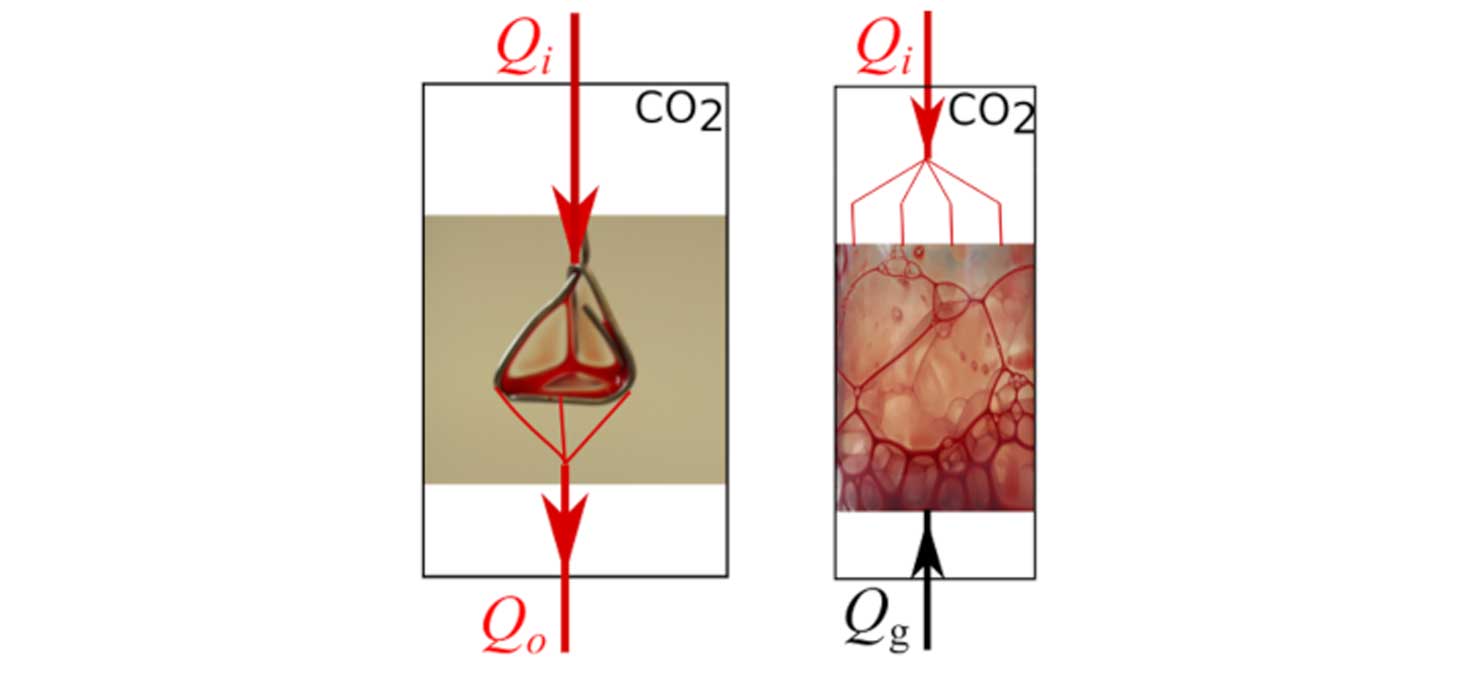- Share
- Share on Facebook
- Share on X
- Share on LinkedIn
Employment, Research, Recruitment

In order to stop global warming, several IPCC scenarios are based on an intensive capture of CO2 from the atmosphere in order to limit the greenhouse effect induced by it. This is a technically ambitious objective since it will require the development of processes that will allow the separation of CO2 from other gases in the atmosphere and its concentration in order to limit storage volumes. The respiratory system of living beings is however capable of such a feat since it is able to capture oxygen from the air and concentrate it in the blood.
Several factors contribute to this efficiency: in mammals, the enormous specific surface of the pulmonary alveoli allows the development of a large exchange surface between the liquid and the blood. Secondly, the alternation of the inspiration and expiration cycles allows a mixing of the gas in the atmosphere, which limits the concentration polarizations and finally the selectivity of the red blood cells for oxygen allows to shift the solubility equilibrium of this gas in the plasma in order to concentrate it in liquid phase. Finally, the hydrodynamic flexibility of the arterial system allows to convey these red blood cells loaded with oxygen to the muscles where it will be consumed.
The objective of this training course is to realize a prototype of CO2 sensor-concentrator, inspired by the one realized by the respiratory system of the living beings for oxygen. For this, we propose to use aqueous foams. As for the breathing systems, they present a very large surface of liquid/gas exchange and can be dynamically solicited to stir the gas. Moreover, if they are loaded with red blood cells, the solubility equilibria can be shifted and the red blood cells transported through the foam's microchannel network to be concentrated.

Figure 1 : On the left, an elementary foam cell fed with foamy liquid loaded with red blood cells at the flow rate Qi will be inserted in a hermetic chamber in black. The CO2 content in the chamber as well as in the outgoing liquid will be measured. On the right, a gas flow Qg will bubble into blood and form a foam column of stationary height. This column will be fed by a flow Qi of foaming solution loaded with red blood cells. The CO2 content in the chamber will also be measured.
To test this idea, we propose to realize elementary foam geometries made of an assembly of films connected by liquid microchannels (see Fig). First, we propose to study experimentally how the liquid distributes between the films and the microchannels. The thickness of the films will be measured by UV-Vis spectroscopy and the flow velocity of the red blood cells by dynamic tracking of the red blood cells in the films. Then, we will study the gas transfer between these structures and the atmosphere. For this, the geometries will be inserted in a hermetic enclosure where the evolution of the CO2 content can be measured. In particular, we will correlate the amount of CO2 absorbed with the exchange surface of the system, the concentration of red blood cells and the feed rate. Finally, a study at the foam scale will also be proposed by bubbling an air/CO2 mixture of given concentration at a gas flow rate Qg in a foaming blood solution (see Fig. 1 right). All results will be rationalized via advection-diffusion models in the microchannels and films of the foam.
This internship may lead to a thesis financed by the AURA region.
Contact
Elise LORENCEAU
Office 208
Tel: 04 76 51 47 62
elise.lorenceau univ-grenoble-alpes.fr (elise[dot]lorenceau[at]univ-grenoble-alpes[dot]fr)
univ-grenoble-alpes.fr (elise[dot]lorenceau[at]univ-grenoble-alpes[dot]fr)
Gwennou COUPIER
Office 309
Tel: 01 76 51 47 63
gwennou.couier univ-grenoble-alpes.fr (gwennou[dot]couier[at]univ-grenoble-alpes[dot]fr)
univ-grenoble-alpes.fr (gwennou[dot]couier[at]univ-grenoble-alpes[dot]fr)
Benjamin DOLLET
Office 332
Tel: 04 76 51 47 74
benjamin.dollet univ-grenoble-alpes.fr (benjamin[dot]dollet[at]univ-grenoble-alpes[dot]fr)
univ-grenoble-alpes.fr (benjamin[dot]dollet[at]univ-grenoble-alpes[dot]fr)
- Share
- Share on Facebook
- Share on X
- Share on LinkedIn